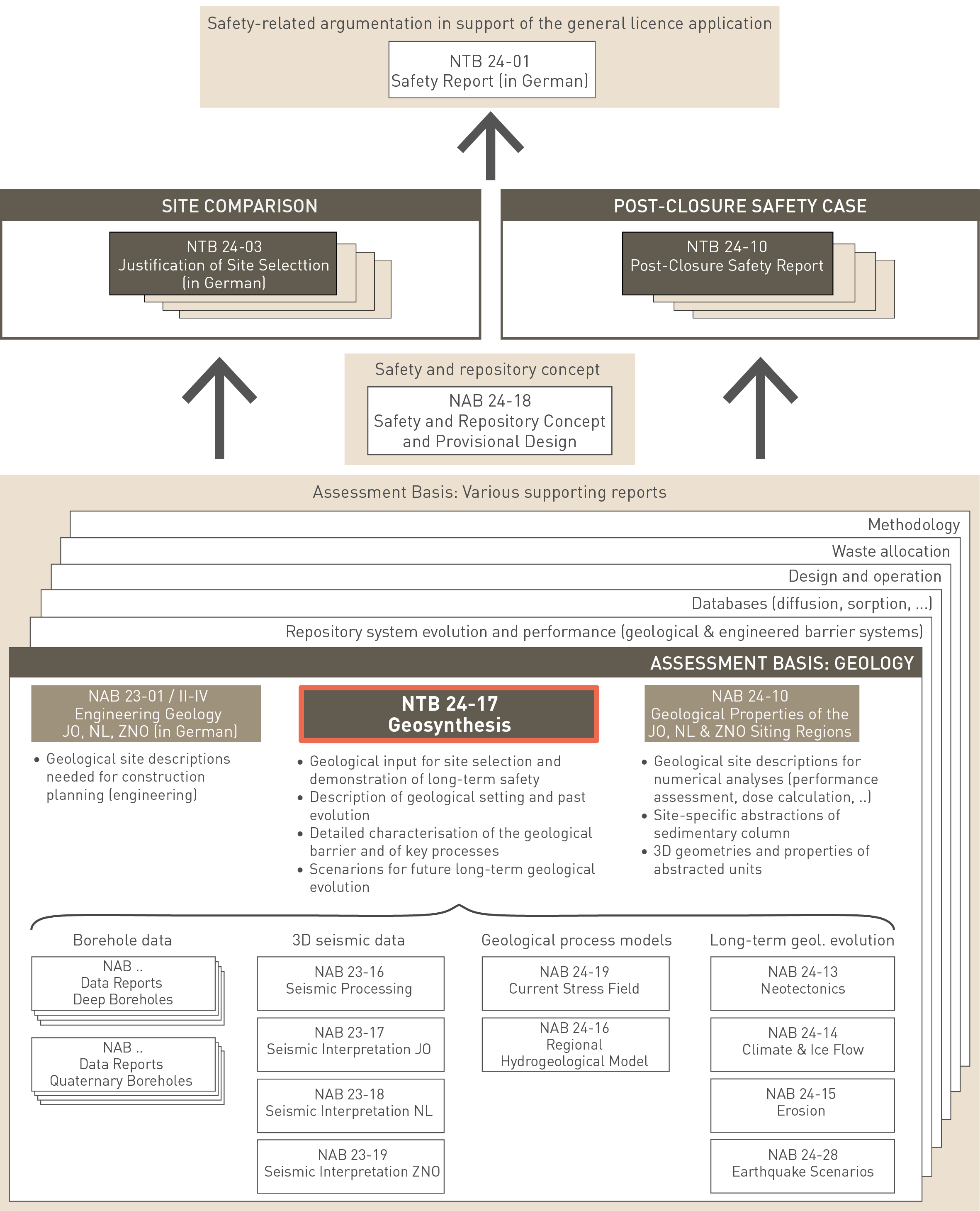In Switzerland, legal regulations (Nuclear Energy Act, KEG 2003 and Nuclear Energy Ordinance, KEV 2004) and guidelines are in place for the management of radioactive waste. The Nuclear Energy Ordinance (KEV) classifies Switzerland’s radioactive waste into low- and intermediate-level waste (L/ILW), alpha-toxic waste3 and high-level waste (HLW), the latter comprising spent fuel and vitrified HLW from reprocessing. The Nuclear Energy Act (KEG) requires the disposal of all these types of radioactive waste in deep geological repositories. The feasibility of this disposal solution has been demonstrated for L/ILW in Nagra (1985) and for HLW (including long-lived intermediate-level waste) in Nagra (2002).
The Sectoral Plan for Deep Geological Repositories (SGT) regulates the search for suitable siting regions for deep geological repositories in Switzerland. This site selection process is conducted in three stages (SFOE 2008). SGT Stages 1 and 2 have been completed and Stage 3 is currently ongoing. Clarifications of the safety-related specifications for this stage are provided in ENSI 33/649 (ENSI 2018), while ENSI Guideline G03 (ENSI 2023) and the corresponding explanatory report (ENSI 2020) specify the protection objective, protection criteria and design principles for the deep geological repositories.
In SGT Stage 3, three siting regions in Northern Switzerland have been investigated – Jura Ost (JO), Nördlich Lägern (NL) and Zürich Nordost (ZNO) – with the objective of selecting one siting region for a HLW repository, one for a L/ILW repository, or one for a combined repository for all waste types. Following a comparison of these siting regions, Nagra concluded that NL is the safest and most flexible siting region and is therefore applying for a general licence for a combined repository for both HLW and L/ILW at the Haberstal site within the region (Nagra 2022).
The justification for selection of a site, as well as the demonstration of post-closure safety at the site, are key components of the general licence application (RBG4). Fig. 1‑1 shows the post-closure safety and site selection reports that provide the underpinning evidence and assessment for the general licence application. From the top level downwards, they comprise:
-
The overarching safety report NTB 24-01 ("Sicherheitsbericht"; Nagra 2025b) which summarises the safety-related argumentation, including post-closure and operational safety shown at the top of Fig. 1‑1).
-
The upper left side of Fig. 1‑1 shows the reports supporting Nagra’s site comparison. The available options are compared with respect to safety and engineering feasibility and the results are synthesised in NTB 24-03 ("Bericht zur Begründung der Standortwahl"; Nagra 2025a).
-
The upper right side of Fig. 1‑1 shows the reports documenting the post-closure safety case for the combined repository at the site, including its synthesis in NTB 24-10 ("Post-Closure Safety Report"; Nagra 2024r).
-
The central part of Fig. 1‑1 shows a report presenting the safety and repository concept, including the provisional design.
The lower part of Fig. 1‑1 shows a selection of geological reports providing the scientific basis for the relevant aspects of the geological barrier and its future evolution. The present report, NTB 24-17 ("Geosynthesis") essentially synthesises the geological information presented in the lower-level geological reports.

Fig. 1‑1:Positioning of this report, NTB 24-17 ("Geosynthesis"), in relation to key reports for site selection and demonstration of post-closure safety and to supplementary geological reports

